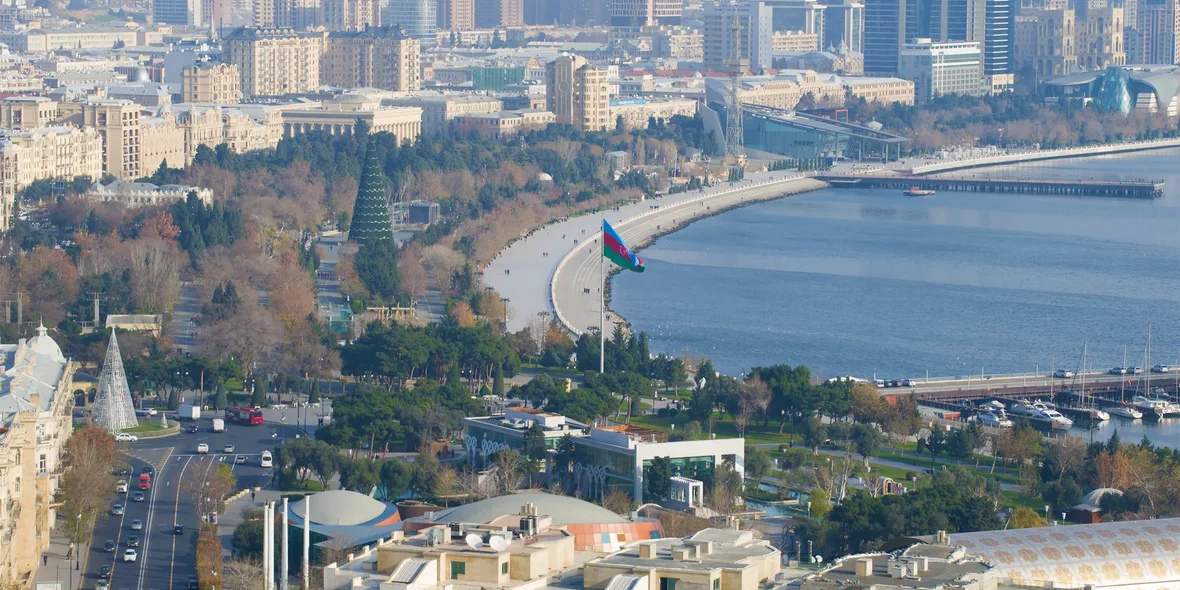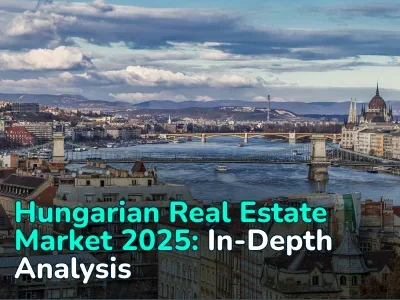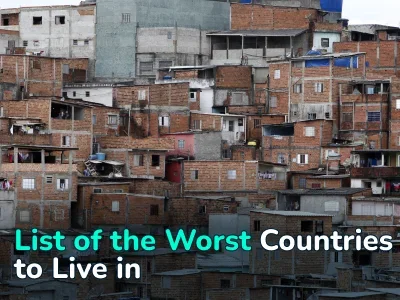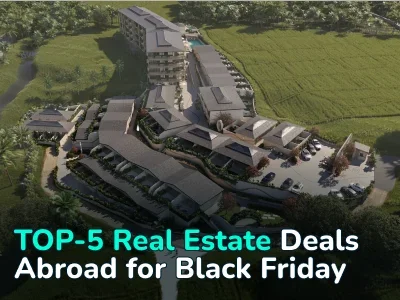
Real Estate in Azerbaijan: Prices by Districts, Purchase Process, Obtaining Residence Permit
The Azerbaijan real estate market is in a phase of active growth with signs of overheating, especially in the residential sector. According to the country's Central Bank, over the last five years (starting from June 2020), housing prices have increased by 46%. After a period of relative stability in 2020 (caused by the COVID-19 pandemic), the market is showing a steady rise.
Also, read our article about the personal experience of living in Azerbaijan.
Market Condition and Dynamics
In 2024, residential real estate prices rose by an average of 10%. The growth was uneven: on the primary market (new builds) — 11.3%, on the secondary market (existing buildings) — 9.8%.
In the first half of 2025, the dynamics sharpened even further. Compared to the same period in 2024, residential real estate prices rose by 13.8%, with growth rates exceeding population income growth. Household incomes increased by only 6.1%, creating a serious imbalance between price growth and population solvency.
Analysts forecast that by the end of 2025, the total value of Azerbaijan's real estate market will reach $501.33 billion. Of this amount, approximately $403.46 billion will fall on the residential sector.
Housing Prices in Baku by Districts
The cost of apartments in Baku strongly depends on the district and type of housing. In central districts — Nasimi, Yasamal, Narimanov, Nizami — new build prices range from 2200 to 4100 manats per square meter (1300 and 2400 US dollars, respectively). On the outskirts, in Surakhany, Binagadi, and Khatai, housing is cheaper — from 1100 to 2600 manats per square meter (650 and 1500 US dollars, respectively).
Detailed information on key districts:
|
District |
New builds, m² (manats) |
Secondary housing, m² (manats) |
|
Nasimi |
2375–4115 |
2014–3742 |
|
Yasamal |
2205–3985 |
1940–3182 |
|
Narimanov |
2517–3980 |
2312–3250 |
|
Nizami |
2780–3025 |
2533–2610 |
|
Khatai |
2020–3408 |
1806–3050 |
|
Binagadi |
2583–2941 |
1536–2710 |
|
Surakhany |
1752–2230 |
1400–1960 |
The most expensive locations
The highest prices are recorded on central avenues and streets. In Sabail, on Neftchilar Avenue, the average cost per square meter is 9640 manats. In Yasamal, on Busti Bagirova Street, it reaches 3635 manats, and in Nasimi, on 28 May Street, 3827 manats. Such prices are explained by the prestige, proximity to the center, and developed infrastructure of these districts.
Primary vs. secondary market
The difference between new build and secondary housing prices fluctuates from 5 to 45% depending on the district and building type. In central districts, this difference is especially noticeable. On average, secondary market prices range from 1700 to 1900 manats per square meter.
Critical Housing Affordability Problem
The housing affordability situation is extremely tense. The ratio of the average apartment price in Baku to the average monthly nominal income is 217 months, equivalent to 18.1 years of net savings without any other expenses. For the average Baku resident, this means that buying an apartment is almost two decades of accumulation.
The average rental payment in the capital is 883 manats, or about 520 US dollars (based on data from the end of the first half of 2025). This means that investments in real estate are recouped only after 22.5 years. That is, even rental income from renting out an apartment takes a very long time to compensate for the investment.
The situation is worsening due to limited access to mortgages and expensive loans.
Rental Market
Baku's rental market is experiencing significant growth. In 2024, rental costs rose by 10–12%, and in 2025, growth of another 13–15% is expected. The rise in prices is especially noticeable in central districts such as Yasamal, Nasimi, and Sabail.
Current rates by districts:
- One-room apartments in the center: 300–400 manats per month (previously 250–350 manats).
- Two-room apartments in the center: 800–900 manats (previously 700 manats).
- Three-room apartments: 600–650 manats.
- On the periphery: prices are 20–30% lower.
Demand for rentals in Baku is growing due to the influx of foreign specialists, international companies, diplomats, and IT workers, as well as people relocating in connection with the restoration of Azerbaijani territories.
Main Reasons for Price Growth
Shortage of new homes
One of the key reasons for the price increase was the reduction in the construction of new residential complexes. Several years ago, the architecture and urban planning committee limited the issuance of construction permits. Many developers have taken a wait-and-see position, awaiting the allocation of land plots. This artificially limits supply on the market, leading to price growth.
Increase in construction costs
The rise in prices for building materials, labor, and energy resources directly affects the cost of new builds, especially under conditions of limited land supply.
Investment attractiveness of apartments
Apartments are becoming an increasingly attractive investment tool. Inflation and limited choice of alternative ways to invest capital for the middle class are intensifying this trend. In conditions of macroeconomic instability, housing is seen as a way to preserve and increase capital.
Demographic and migration
Factors Internal migration from regions to the capital and the influx of foreign specialists support high demand for housing. After the restoration of Azerbaijani territories, there is also an influx of labor resources.
Mortgage Lending and Loan Accessibility
Mortgage lending remains an important tool for buying housing, but its volumes are slowing down. According to 2024 data, banks issued mortgage loans totaling 440.1 million manats (about $260 million) through the Mortgage and Credit Guarantee Fund of Azerbaijan (MCGF). This is 4.6% less than in 2023, when the amount was 459.4 million manats.
The negative dynamics continued into 2025. Fresh data show that in January–September 2025, the Fund issued mortgage loans totaling 354 million manats ($208 million), including 69 million manats in the form of preferential loans. The program covered more than 3300 families.
Mortgage conditions
In Azerbaijan, mortgages are intended only for purchasing an apartment or house and cannot exceed 80% of the market value. The size of the monthly payment is limited to 70% of the borrower's income.
Reasons for the decline in lending
The volume of mortgage loans is decreasing due to several factors:
- Rise in interest rates.
- High housing prices and the need for large down payments.
- Decline in population incomes, not keeping up with price growth.
- Restrictions in banks' credit policies.
Buying Real Estate in Azerbaijan by Foreign Citizens
Foreigners can acquire residential houses, apartments, offices, and commercial real estate in Azerbaijan. However, direct ownership of land is prohibited for them.
Foreigners can obtain land plots through:
- Long-term lease from the state for up to 99 years.
- Indirectly, by creating a company that owns the land or rights to it.
Documents for foreigners:
- Passport and documents confirming citizenship.
- Apostille and consular legalization of foreign documents, if necessary.
- Notarized translation of documents into Azerbaijani.
- Tax number, which can be obtained during the registration process.
- Certificate of no criminal record (in some cases).
- Confirmation of the source of funding.
Registration for foreigners
The registration process is similar to that for residents, but includes additional steps:
- Notarial certification of the sales contract.
- Submission of documents to the State Real Estate Registry, including:
- Notarized copy of the passport.
- Translation of all foreign documents into Azerbaijani.
- Certificate of no criminal record, if required.
- Registration in the registry.
- Obtaining a certificate of ownership.
Risks for foreign buyers
Buying new builds that are not registered in the state registry carries increased risks. If an apartment does not have an ownership document, it cannot be found in the registry. This means that:
- Transactions with such property will not be officially registered.
- Mortgages and encumbrances will remain invisible.
- Rights of third parties will not be registered.
- Fraudulent schemes are possible.
We recommend always checking the registration status of the property in the state registry before signing the contract and using the services of a qualified legal firm.
Investment Programs and Obtaining Residence Permit
Azerbaijan attracts foreign investors with programs to obtain residence permits for investments in the country's economy.
Temporary residence permit (TRP) program — 3 years
A three-year residence permit can be obtained under one of the following conditions:
- Investment in real estate of at least 100,000 manats (approximately $59,000).
- Bank deposit of 100,000 manats ($59,000).
- Investment in a company (51% shares) with capital from 50,000 manats ($30,000).
- Economic investment of at least 500,000 manats ($295,000).
The residence permit can be extended for additional periods if investments continue.
Permanent residence permit (PRP) program
To obtain permanent status, more significant investments are required:
- Investment in real estate of at least 200,000 manats ($120,000).
- Bank deposit of 200,000 manats ($120,000).
- Economic investment of at least 500,000 manats ($295,000).
- Own a business with an annual turnover of at least 100,000 manats ($60,000).
Key Investment Projects and Forecasts
One of the most significant development projects in the capital is White City Baku — an ambitious transformation of a 221-hectare former industrial district into a modern residential and commercial center. The project plans to:
- Build about 19,700 apartments of various sizes — from studios to multi-room apartments.
- Create commercial and office spaces.
- Develop parks and green areas.
- Build new metro stations.
- Develop social infrastructure, including schools, hospitals, and shopping centers.
Experts in the Azerbaijani market forecast a gradual slowdown in price growth rates to 7–10% annually in the residential segment, although in prestigious districts growth may remain above average. The main demand will be focused on ready housing that meets mortgage financing conditions and on comfort-class properties.
Author
I am responsible for editorial work. I write expert interviews and guides.





















